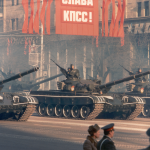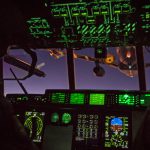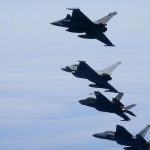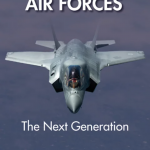Available here from Hurst Publishers
Well over 10 years have passed since Bousquet’s first edition. Time for an update, he says, to keep track of developments over the intervening period as we swing away from counter insurgencies and revisit the perilous world of great power competition. The first point to note is that Bousquet has reworked the first edition entirely; no extra chapters bolted on here. The second point is Bousquet’s statement that he wants to make “this edition more accessible and engaging”.
Although the level of level of technical and scientific information is, at times, overwhelming, Bousquet’s second edition is an impressive work that allows the reader to engage with the subject and follow his line of thought. The author himself recommends that those readers less interested in the theoretical aspects concentrate on each chapter’s final section where a summary outlines how they each contribute to the scientific way of warfare. This is certainly advice well worth listening to.
At the heart of this book is humankind’s desire to bring order to a chaotic world. Heidegger, Freud, and Descartes are all here, joined by contemporary giants such as Gray and van Creveld. Bousquet generates a veritable crescendo of ideas and concepts that have shaped the way that humans have sought to bring order from chaos.
For the military, this means bringing order to the battlefield through the application of science. It is difficult to argue with Bousquet when he says that war has become more technically intensive. That the influence of scientific thinking has inevitably deepened. To deliver his message, Bousquet uses four chronological regimes that reflect science’s interaction (some would say hold) on warfare throughout the last 600 years or so. The regimes (Mechanistic, Thermodynamic, Cybernetic and Chaoplexic1) each represent a transfer of technology that brings with it a new dimension to warfare. To simplify matters, Bousquet uses the metaphors of the clock, the engine, the computer, and the network.
The Mechanistic and Thermodynamic regimes each get a chapter. They may both have a historical flavour, but the level of detail and discussion is more than sufficient to get the reader into Bousquet’s way of thinking and how he presents his ideas. The Mechanistic regime is of particular interest, it represented the first cohesive body of scientific ideas and practices in the modern era and attempted to control chaos on the battlefield by preordaining the actions of every soldier.
Bousquet doubles down on the content afforded the more recent Cybernetic and Chaoplexic regimes. It is these 4 these chapters, covering 140 pages, that today’s military practitioner will recognise and be users of the corresponding metaphors: the computer and the network.
Limitations of the centralising cybernetic model were laid bare by the Vietnam war; a system designed to overcome chaos through producing accuracy and certainty. Although Bousquet concedes that Cybernetic regime did see a successful US-led campaign in the form of the 1991 Gulf War, he says it merely demonstrated that a good cybernetic regime could defeat a bad one.
By late 90s, Network-Centric Warfare (NCW) heralded the emergence of chaoplexic warfare. Bousquet is not a fan. NCW should have delivered by promising and preaching decentralisation, but these were undermined by a hierarchy that led to greater centralisation and micromanagement. Information overload and hierarchical structures do not go well together. At first sight I did think the author had over egged the anti-NCW pudding, but it is important to understand why NCW, which should have worked, failed. It was, after all, the last great attempt to bring order from chaos. NCW was meant to unravel the Gordian knot and solve the never-ending struggle to bring order to the battlefield. Whilst at the same time attempting to decentralise decision making to the lowest practicable level. NCW’s failure begs the question, where do we go now?
You’ll have to read the book yourselves to find out where the future lies. But Bousquet’s belief that militaries are invariably bounded by the limits set by their own institutional frameworks does not bode well.
Read this book if you want to immerse yourself and explore how science has shaped warfare over the centuries. Don’t read this book if you are hoping to experience the whiff of gunpowder and the clash of arms.

Phil Clare
Phil Clare is a former RAF Logistics Officer. He has over 30 years experience of single and joint service environments, as well as operational experience that spans Op GRANBY to HERRICK.





